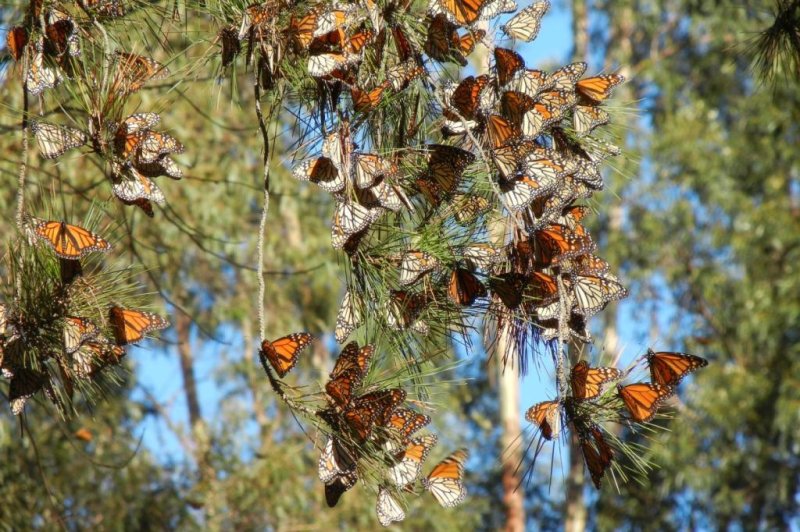A new study finds monarch butterfly populations from western North America have declined far more dramatically than was previously known and face a greater risk of extinction than eastern monarchs. Photo by Candace Fallon
Sept. 8 (UPI) -- The monarch butterfly populations in western North America have declined dramatically and face a greater risk of extinction, a new study shows.
Scientists at Washington State University found that the decline in western monarch butterfly populations was significantly more than previously believed and greater than eastern monarchs.
"Western monarchs are faring worse than their eastern counterparts," Cheryl Schultz, an associate professor at Washington State University Vancouver, said in a press release. "In the 1980s, 10 million monarchs spent the winter in coastal California. Today there are barely 300,000."
Beginning in the 1990s, residents of coastal California noticed that the common monarch butterfly seemed to be disappearing.
"This study doesn't just show that there are fewer monarchs now than 35 years ago. It also tells us that, if things stay the same, western monarchs probably won't be around as we know them in another 35 years," Schultz said.
The study, published Wednesday in Biological Conservation, combined data from hundreds of volunteers who participated in the Xerces Society's Western Monarch Thanksgiving Count since 1997 with earlier monarch counts conducted by amateur and professional butterfly enthusiasts in the 1980s and early 1990s.
"Scientists, policy makers and the public have been focused on the dramatic declines in the well-known eastern population, yet this study reveals that western monarchs are even more at risk of extinction," Emma Pelton, endangered species conservation biologist at the Xerces Society for Invertebrate Conservation said. "We will need significant conservation action to save monarch butterflies in the West."
Scientists are not sure what is causing the decline but the loss and modification of habitat and pesticide use in the West are likely contributing factors.
The U.S. Fish and Wildlife Service, which funded the study, is currently considering whether to list the monarch butterfly as a threatened species under the Endangered Species Act.















